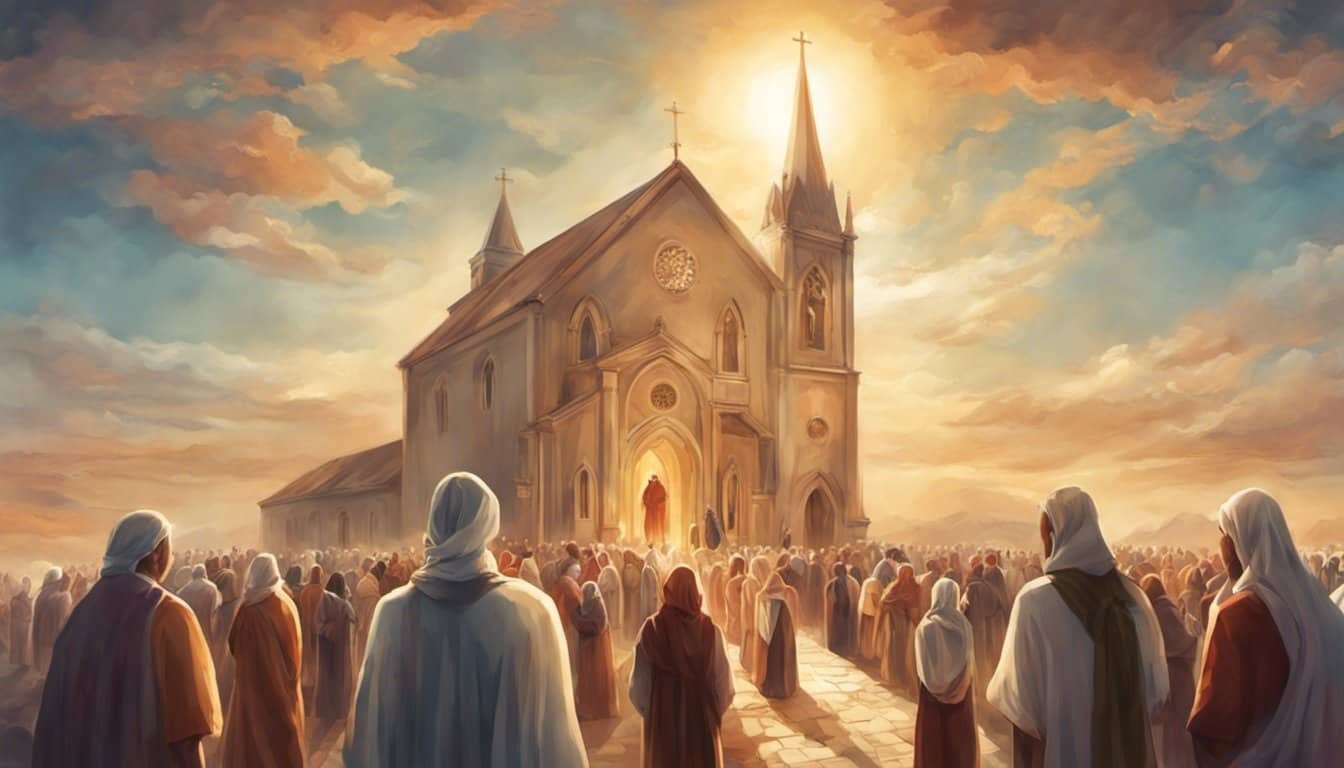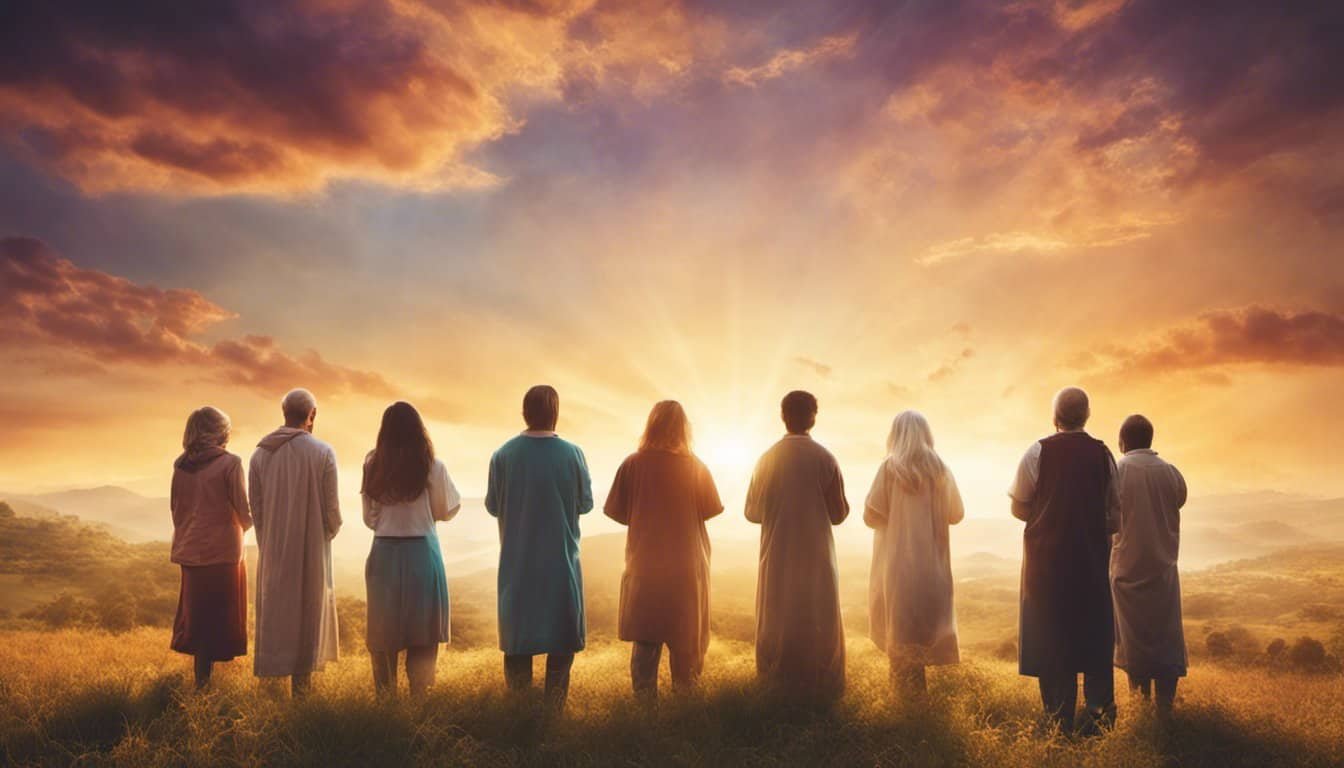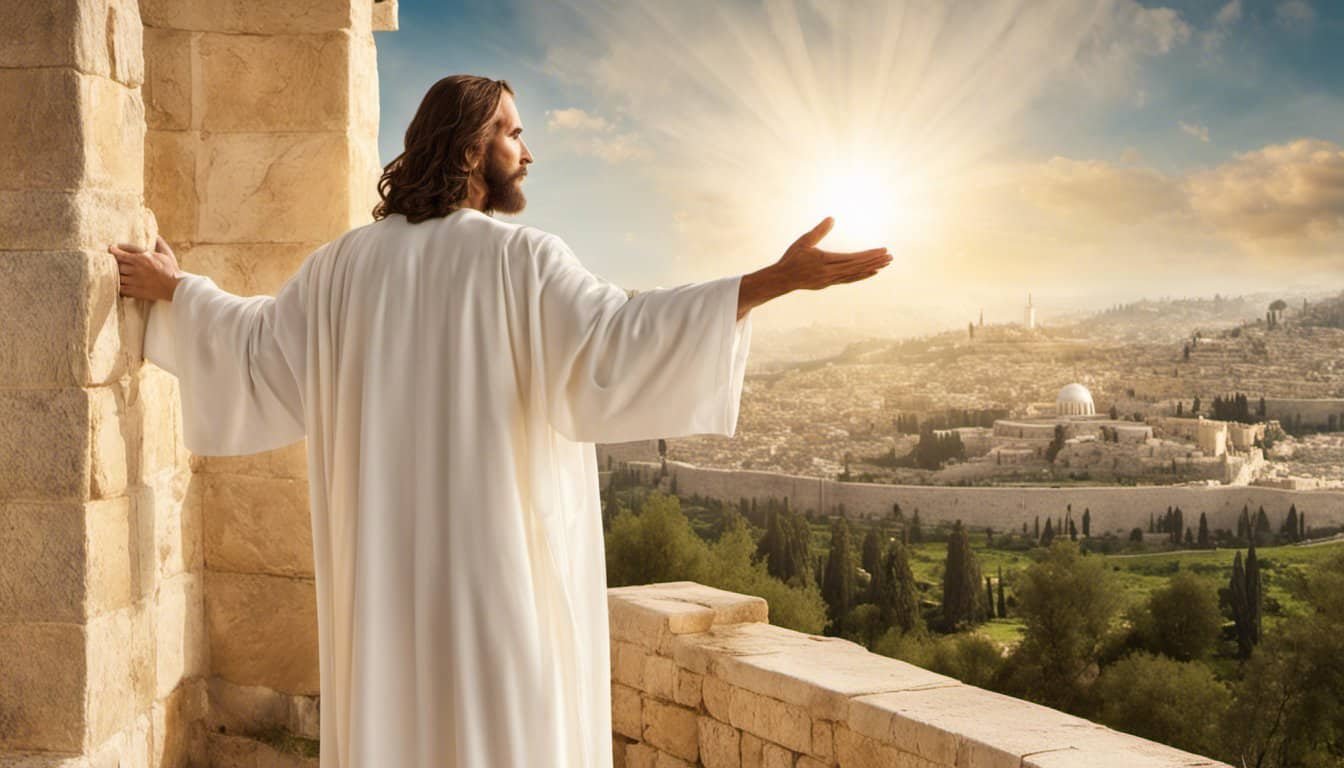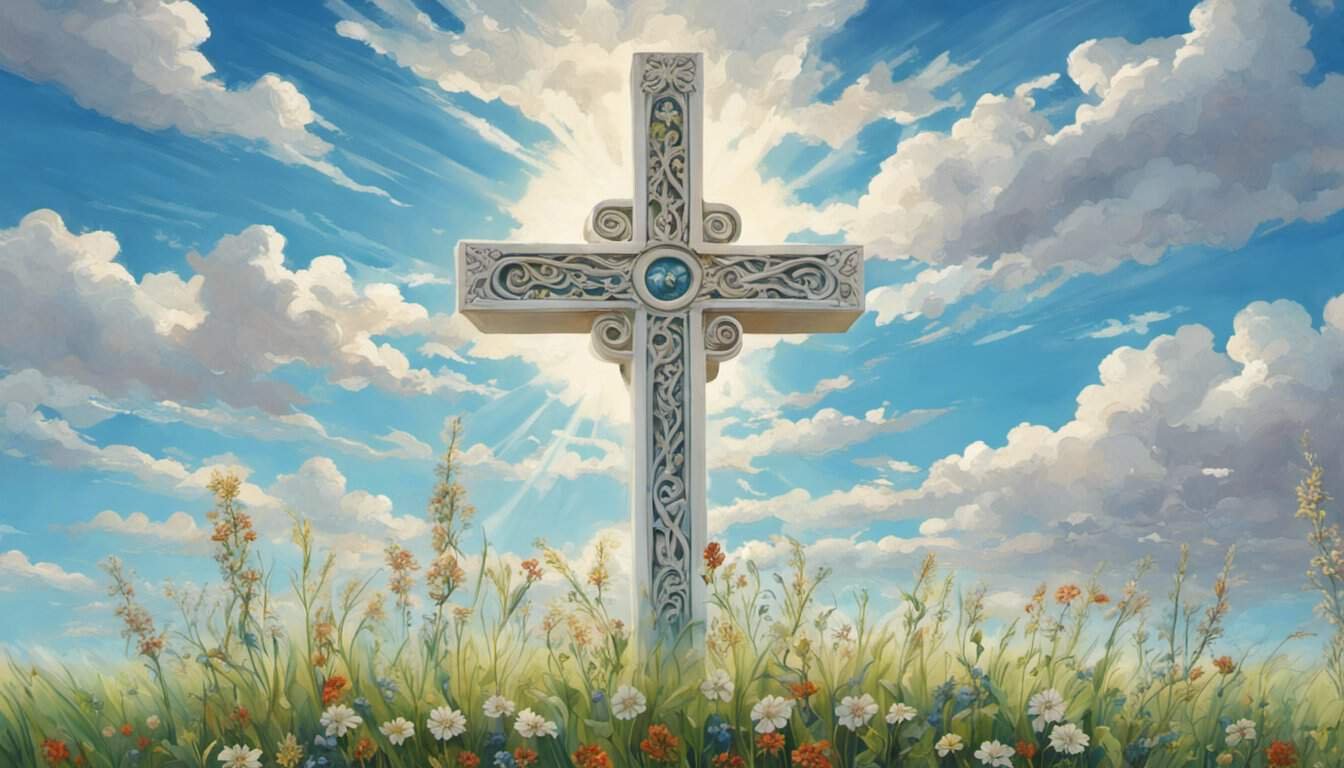Within Christianity, the cycle of the liturgical year is punctuated by an array of symbols that hold rich significance for the faithful. These symbols serve as visual and tactile reminders of the spiritual truths and mysteries of the faith. From the Advent wreath signaling a time of anticipation and preparation to the ashes received on Ash Wednesday, Christian symbols help to convey the underlying themes and messages of the liturgical seasons. They anchor the abstract aspects of belief into concrete forms, guiding believers through a yearly journey that mirrors the life of Jesus Christ, from birth to resurrection.


The symbols found in Christian liturgy are more than mere decorations; they’re didactic tools that illustrate and reinforce the lessons of each season. For instance, the vibrancy of red during Pentecost embodies the fire of the Holy Spirit, while the white garments at Easter symbolize purity and resurrection. The liturgical calendar acts not just as a schedule of events but as a mosaic of faith, with each colored thread contributing to the depiction of the Christian narrative. Through these enduring symbols, the liturgical year invites believers to participate in a continual rhythm of reflection, celebration, and growth.
Key Takeaways
- Christian symbols throughout the liturgical year guide believers on a journey reflecting Jesus Christ’s life.
- The colors, icons, and rituals deepen understanding and connection to the spiritual significance of each season.
- The liturgical calendar visually represents and organizes the cycle of Christian celebrations and observances.
Advent: Anticipation and Preparation


As I explore the significance of Christian symbols during the liturgical year, I find Advent to be a profound period of anticipation and preparation. This is the time when I ready my heart for the coming of Christ, embracing themes of hope and expectation.
Significance of the Advent Wreath
The Advent wreath symbolizes the passage of the four weeks of Advent. It’s a circular garland of evergreen branches representing eternal life. I see it as a reminder of the continuity of the seasons and the faithfulness of God. Typically, there are four candles around the wreath, and I light one additional candle per week, marking my journey through this time of reflection and expectation.
Liturgical Colors of Advent
During Advent, the colors I see in church decorations are predominantly purple and rose. Purple is a color of both penitence and royalty, which to me denotes the dual nature of the season—repentance in preparation for the coming king. On the third Sunday, known as Gaudete Sunday, I notice the color rose. This lighter shade signifies my joyful expectation that the preparation is halfway through and that Christmas is near.
Themes of Hope and Expectation
Each week of Advent, I contemplate a different theme—hope, peace, joy, and love. The first candle, which I think of as the ‘Prophet’s Candle,’ symbolizes hope and the anticipation of the coming Messiah. This is a time when I focus on the promise of salvation and the hope that it brings to my life and the world. Each subsequent candle heightens my sense of awaiting the fulfillment of God’s promises with an expectant joy.
The Nativity and Season of Christmas
Christmas is a time when Christians around the world celebrate the birth of Jesus Christ. At its core, this season is expressed through vivid colors, rich symbolism, and heartwarming traditions that reflect the joy and love of the occasion.
Colors and Symbols of Christmas
- Red: Symbolizing the blood of Jesus, it reminds us of His sacrifice.
- Green: Represents eternal life, illustrating the everlasting life found in Christ.
- White: Denotes purity and peace, often seen in Christmas lights and decorations.
Christmas decorations often include Nativity scenes, which depict the holy night of Jesus’ birth. Churches and homes display these scenes to honor the true meaning of Christmas. The colors red, green, and white are prevalent during this season, adorning everything from ornaments to wreaths, symbolizing various Christian truths.
The Celebration of the Birth of Jesus Christ
I find that the Nativity scene captures the essence of the Christmas story—the birth of Jesus Christ in a humble manger in Bethlehem. It’s a scene that universally brings Christians together to acknowledge the origins of their faith.
The celebration includes exchanging gifts, reminiscent of the wise men’s offerings to the infant Jesus, and acts as a reminder of God’s gift to humanity. For many, this act of giving is an expression of love to our family and friends, perpetuating the message of joy and goodwill that Jesus Christ’s birth signifies.
Lent: A Time for Reflection and Penance

As I delve into Lent, I’m immediately enveloped by its somber yet reflective nature. This season is about turning inwards and seeking a deeper connection with faith through repentance and penance.
Liturgical Colors and Their Significance
Purple: The hallmark color of Lent. I’m always struck by the profound symbolism it caries – penance, repentance, and royalty. When I see this color in churches during Lent, it reminds me of the sorrow for our sins and the majesty of Jesus as the King of Kings. The use of purple during Lent is a visual cue for me to shift into a state of reflection and preparation for Easter.
Lenten Practices and Symbolism
Fasting and Abstinence: These are the keystones of Lenten practices. I practice fasting not merely as a dietary restriction but as a form of spiritual discipline. It teaches me self-control and echoes the 40 days Jesus spent in the desert. Abstaining from certain luxuries during this time enhances my introspection and commitment to spiritual growth.
Reflection and Introspection: Lent is my annual opportunity for deep self-reflection. The practice of repentance during these 40 days readies my heart for the joy of Resurrection.
The Lenten journey isn’t just about what I give up; it’s a holistic approach to foster a closer relationship with God. Lent reinforces my faith and aids in my personal pursuit of spiritual clarity.
Holy Week and Easter: Resurrection and Renewal
As Christians, I find that Holy Week offers a transformative journey from Palm Sunday to Easter Sunday, centered around the themes of resurrection and renewal. This sacred period culminates in the joyous celebration of Easter, where I celebrate Jesus Christ’s victory over death and the promise of new life.
Palm Sunday to Easter Sunday
Palm Sunday marks the beginning of Holy Week for me, commemorating Jesus’ triumphant entry into Jerusalem. During church services, I often receive palm branches, symbolizing the palms that were laid down before Christ as he entered the city.
Leading up to Good Friday, the week intensifies with reflections on Jesus’ suffering and sacrifice. On this somber day, I commemorate His crucifixion, often observing a period of fasting and prayer. It’s a powerful time for me to contemplate the cost of my salvation.
The vigil of Easter Sunday is the highlight of the week, representing the resurrection of Jesus and renewal of life. It begins with the Easter Vigil, which is the most significant service of the year for me. I often light the Paschal candle, representing Christ as the light of the world, and share in the joy that the light has overcome darkness.
Liturgical Colors and Easter Symbols

The use of specific colors and symbols during Holy Week deeply enriches my experience of the Easter story. During most of the week, the color purple or red signifies the royalty of Jesus and the passion of His sacrifice.
On Easter Sunday, I embrace the color white in my church’s decor and my attire, signifying purity, resurrection, and joy. It reflects the light of the Risen Christ and the hope of eternal life.
Among the many symbols, the Paschal candle stands out to me. It is lit at the Easter Vigil and represents the resurrection light that dispels all darkness. This candle burns throughout the Easter season and during baptisms and funerals, emphasizing the ongoing impact of the resurrection in my life.
By engaging with these symbols and liturgical colors, I find a deep sense of connectedness to the overarching narrative of renewal inherent in the Easter celebration.
Pentecost: Celebrating the Holy Spirit


Pentecost is a joyous occasion in the Christian calendar when I, along with fellow believers, commemorate the descent of the Holy Spirit upon the Apostles. It’s marked by vibrant displays of red within the church, symbolizing the fiery passion and love of the Spirit.
Symbols and Colors of Pentecost
At Pentecost, red is the predominant color used in church decorations and vestments. This color choice reflects the fire of the Holy Spirit that visited the Apostles, empowering them to speak in different languages. I’ve seen red in various elements during Pentecost services:
- Altar cloths and banners: Draped in red, they signify the warmth and power of the Holy Spirit.
- Clergy vestments: Priests and deacons often wear red stoles and chasubles, echoing the Apostles’ experience.
- Flames and Doves: Art and imagery in church often depict flames or a dove, representing the Holy Spirit’s presence on that first Pentecost.
The use of red not only reminds me of the biblical narrative of Pentecost but also invites reflection on the Holy Spirit’s role in my personal faith journey and within the broader community of the church.
Ordinary Time: Growth and Unity in Faith

During Ordinary Time, we observe the steady rhythm of the Church’s life. It’s a period marked by a focus on the growth of our faith and the unity it brings amongst believers.
Liturgical Colors and Meaning

In this season, green vestments are worn by the clergy. The color green signifies growth and life in the Church, reminding me of the ongoing opportunity to deepen my faith. This period isn’t stagnant; it’s filled with a growing vibrancy, much like the progression of life in nature. It’s a call for personal growth, paralleling the natural world’s continuous renewal.
Feasts and Commemorations
There are several special feasts and commemorations during Ordinary Time that stand out to me. For instance, the liturgical calendar includes celebrations like Trinity Sunday and the feasts of various saints. These days serve as integral parts of our tradition, reminding me of the cloud of witnesses who have walked the faith before us. All these feasts contribute to the unity and diversity of our universal faith.
Other Important Liturgical Celebrations

In addition to major seasons like Advent and Lent, the liturgical calendar includes a rich tapestry of Feasts, Solemnities, Memorials, and Optional Memorials that honor Mary, the Saints, and the mysteries of the faith.
Feasts of Mary and the Saints
The Feasts of Mary highlight the significant events of the Blessed Virgin Mary’s life and her role in the history of salvation. Notably, the Assumption of Mary, symbolizing her being taken up into heaven, and the Immaculate Conception, celebrating her sinless life from the moment of her conception, are key celebrations.

Saints are honored with various feasts throughout the year to commemorate their lives and virtues. For instance, the Feast of St. Francis of Assisi on October 4th highlights his love for the poor and nature, offering me a model for Christian living and respect for God’s creation.
Solemnities, Memorials, and Optional Memorials
Solemnities are the highest rank of liturgical celebration and often mark important mysteries of the faith, such as the Solemnity of the Most Holy Trinity or the Solemnity of Christ the King. They are pivotal in that they commemorate fundamental Christian beliefs.
Memorials are celebrated in memory of significant saints, such as the Memorial of St. Teresa of Calcutta, reflecting her extraordinary service to the destitute and dying. Optional Memorials allow me to remember saints of particular local or personal importance, offering me the choice to reflect on their example during daily Mass.
The Liturgical Calendar: A Visual Representation of Faith
As I navigate through the year, I’m constantly reminded of my faith and its rich traditions through the liturgical calendar. This calendar is more than just days and months; it’s a visual narrative of the Christian story, expressed through a tapestry of colors and seasons that signify various spiritual sentiments and biblical events.

The liturgical year starts with Advent, a time of hopeful expectation and reflection before Christmas. Here, the color purple denotes a period of waiting and spiritual preparation. As the liturgical color for Advent, it’s deeply symbolic of both penitence and royalty.
Following Advent, I celebrate Christmas and then Epiphany, reflecting on the birth and revelation of Jesus. The colors shift from purples to the joyous whites and golds, symbolizing purity, light, and celebration.
Lent is another solemn season where I reflect on the sacrifice of Christ, and the liturgical color returns to purple, symbolizing the sorrow of penance.
The joyous season of Easter then unfolds, where I celebrate the resurrection of Jesus. The color changes to white or gold, embodying joy and victory.
The cycle culminates with Pentecost, portraying the descent of the Holy Spirit, where the color red signifies passion and fire.

Here’s a quick visual breakdown of the seasons and their corresponding colors:
- Advent: Purple
- Christmas: White/Gold
- Epiphany: Green
- Lent: Purple
- Easter: White/Gold
- Pentecost: Red
Throughout the year, these colors and celebrations keep my church experience vibrant and deeply rooted in the story of my faith, beautifully guiding me through the rituals and traditions of Christianity.












